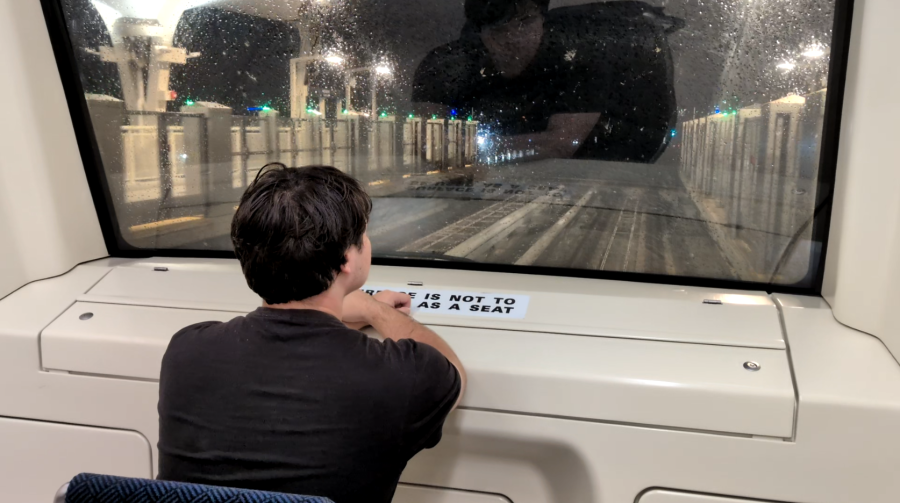HONOLULU (KHON2) — Two New York City civil engineers accomplished their goal of visiting every metro system in the country, topping off their nine-year-long adventure with Honolulu’s Skyline.
Matei Eliezer and Julian Koya Wong visited Oʻahu on Oct. 25, with a quick turnaround trip booked to accomplish their goal.
With less than 12 hours on the island together, Eliezer and Wong began at the Skyline’s Middle Street stop and rode it all the way to the other end in Kapolei — and it left a mark on them.
“We were pleasantly surprised to see that the system was prioritizing safety, because it’s the only metro system in the U.S. and Canada that has platform screen doors at all the stations,” Eliezer said.
In addition to the safety protocols, the duo were impressed with the Skyline’s view as they looked outside the windows, Eliezer added.
Wong was just as impressed with the Skyline’s schedule as he was with the views.
“I honestly think that for what it’s worth, for the area that [Skyline] serves, it’s a fantastic system,” Wong said. “The 10 minutes between trains, the stations are very nice, well kept. The trains themselves are very nice quality. It’s just a smooth ride in general. The fare system is pretty nice.”
He was also a big fan of the HOLO Card system — particularly how you could reload your fare cards with your phone.
While Wong and Eliezer thoroughly enjoyed their experience on Skyline, no system is 100% perfect, with the two saying that the rail’s location and underdeveloped portions needing some improvements.
“It’s not expansive enough. That’s sort of my main issue with the system,” Eliezer said. “Once they expand it more to downtown, to Ala Moana, maybe to UH Mānoa or Waikīkī, I would revisit it and give it a higher rating.”
There are plans to go as far as downtown, which is expected to be completed in 2031, with a future stop at Waikīkī potentially a little further in the future.
In Wong’s opinion, one step to improve Skyline comes with ensuring the areas around Skyline stops are developed and primed for human activity — whether that be shopping, dining or living.
“There’s a concept in urban planning called transit-oriented development, where developers and municipalities necessarily build dense and mixed use housing and commercial development near transit stops,” Wong said. “Not only do the transit stops have higher ridership, it’s so that more people gain access to the system than before.”
Additionally, the pair pointed out that more usage of ʻōlelo Hawaiʻi would elevate the experience.
“There should be more of an equality when it comes to the Hawaiian language when it comes to the announcements,” Wong said. “A lot of the announcements were only in English.”
With that in mind, Wong pointed out the importance of transit when it comes to aiding hurting communities — which Skyline has a unique opportunity to do.
“If you go anywhere outside of downtown, Ala Moana, Waikīkī, you have these extremely sprawling neighborhoods that are just completely dependent on just auto infrastructure,” Wong said. “I just want to point out how damaging that kind of infrastructure is — not only for the environment, but socially too.”
He emphasized that accessible and affordable public transit is essential to closing gaps faced by sociopolitical minorities.
“Transit is so necessary. It’s not only an efficient way to get people around, it’s the best way to life people out of poverty and level the playing field for so many different people,” Wong said. “Native Hawaiians are homeless at a higher rate than other races, and if these people had access to equitable and sustainable and affordable and accessible transit, then they would have more of a chance to bring themselves up in society. Society would be just that much more fair for them.”
Transportation, for Wong and Eliezer, is a cornerstone in society that not many people realize is essential to a strong community.
“Transit is one of the best investments that any community can make,” Wong said.
Once Skyline is completed in the next several years, Eliezer and Wong look forward to revisiting the rail, and also look forward to seeing how much it’ll grow in that time. In the meantime, they plan on admiring the train from the east coast.
“As it stands right now, it’s a neat little train,” Eliezer said.
